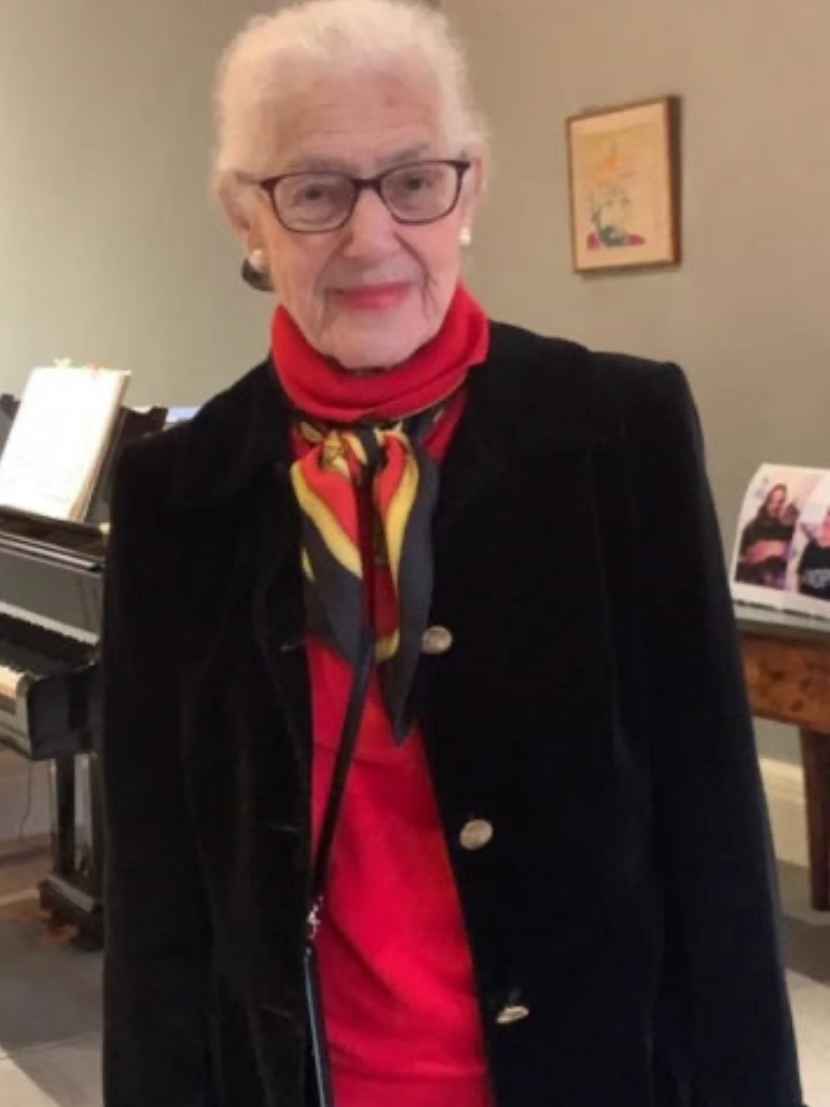Temple C at Selinus, Metopes
1/23
Earn XP
Description and Tags
Name | Mastery | Learn | Test | Matching | Spaced |
|---|
No study sessions yet.
24 Terms
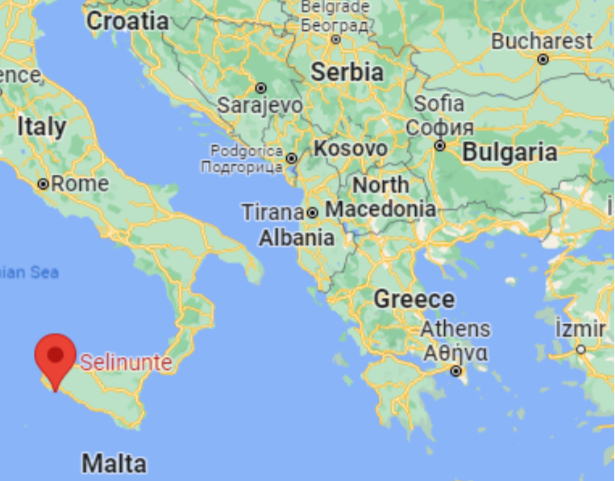
Where was Temple C located?
Selinus in Sicily
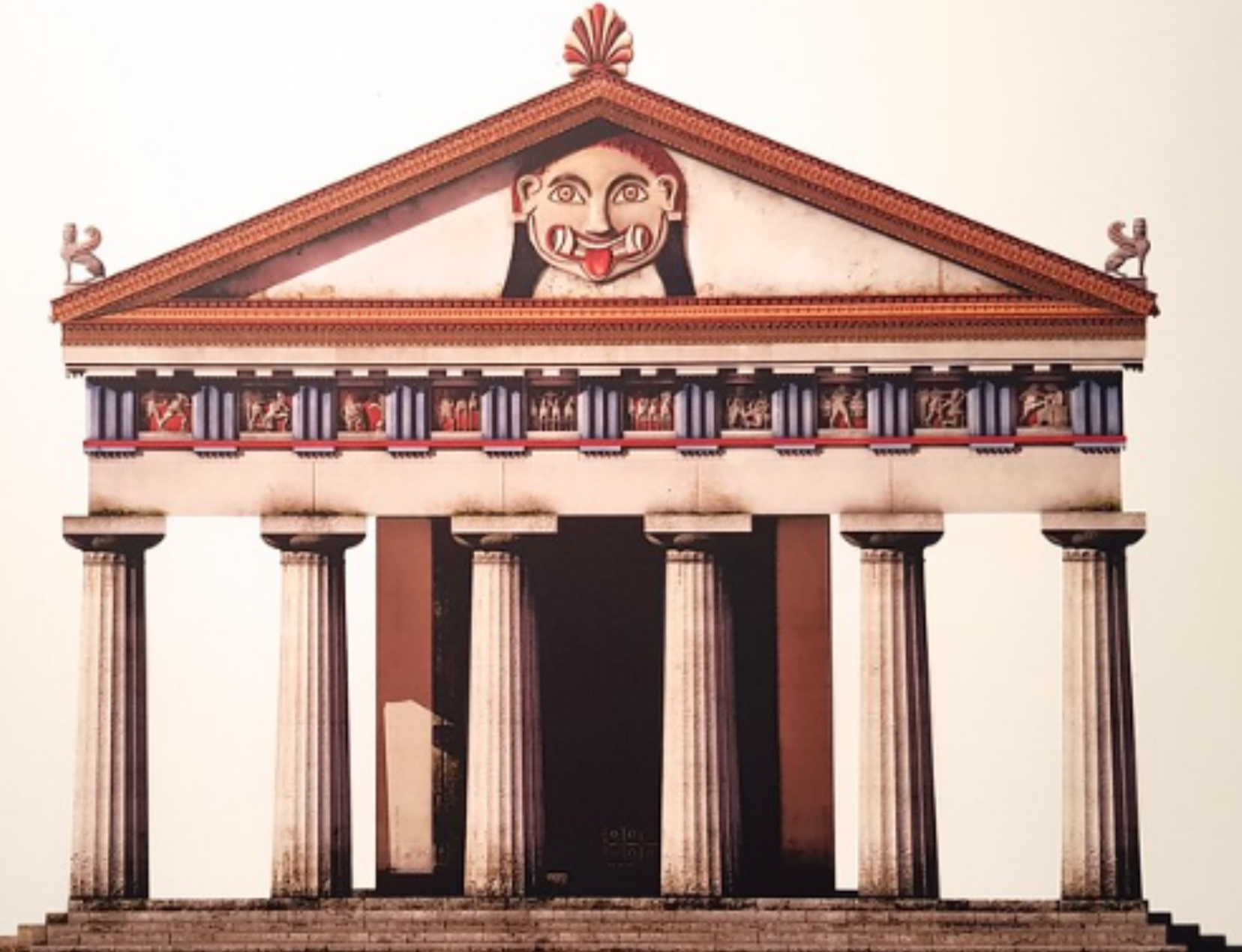
When was Temple C built?
In the late sixth century BCE
What was the purpose of Temple C?
It is representative of the values of the state of Selinus and the people’s devotion to the gods
What were the ten metopai sculpted in and framed by?
The metopai were sculpted in high relief and framed at the top and bottom by blank slabs to make them stand out. They were separated by triglyphs.
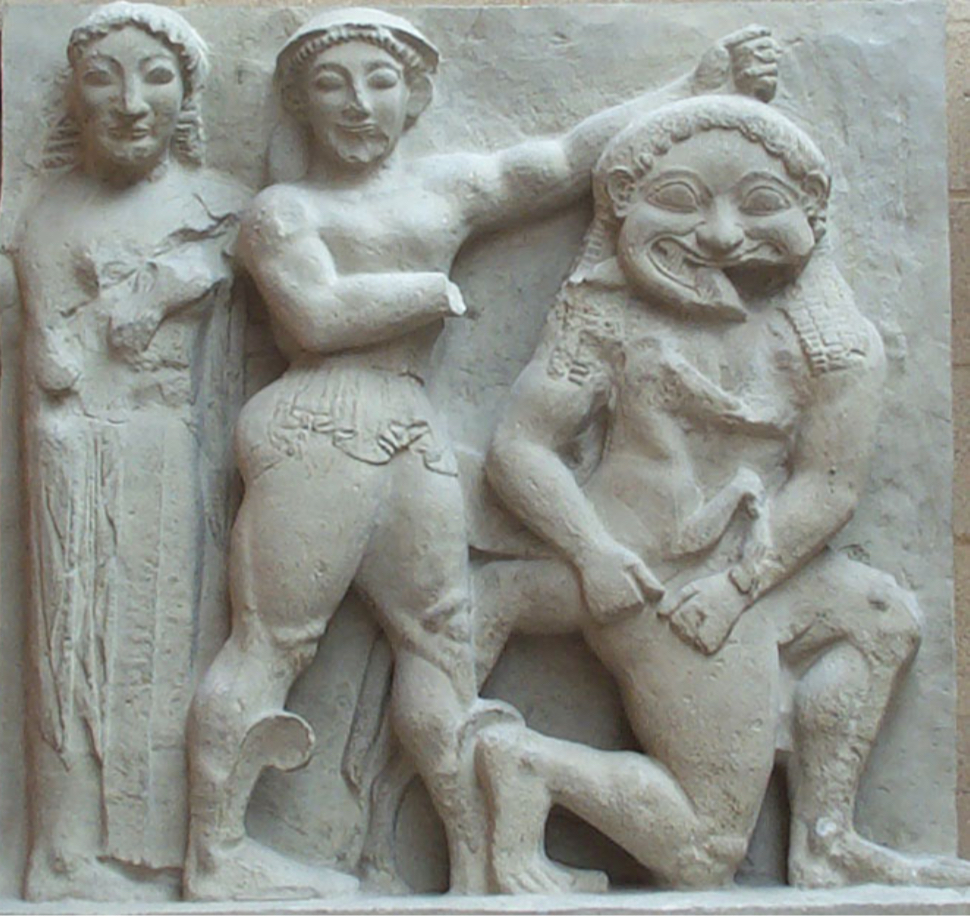
Name the figures in this composition from left to right
Athene, Perseus, Pegasus and Medusa
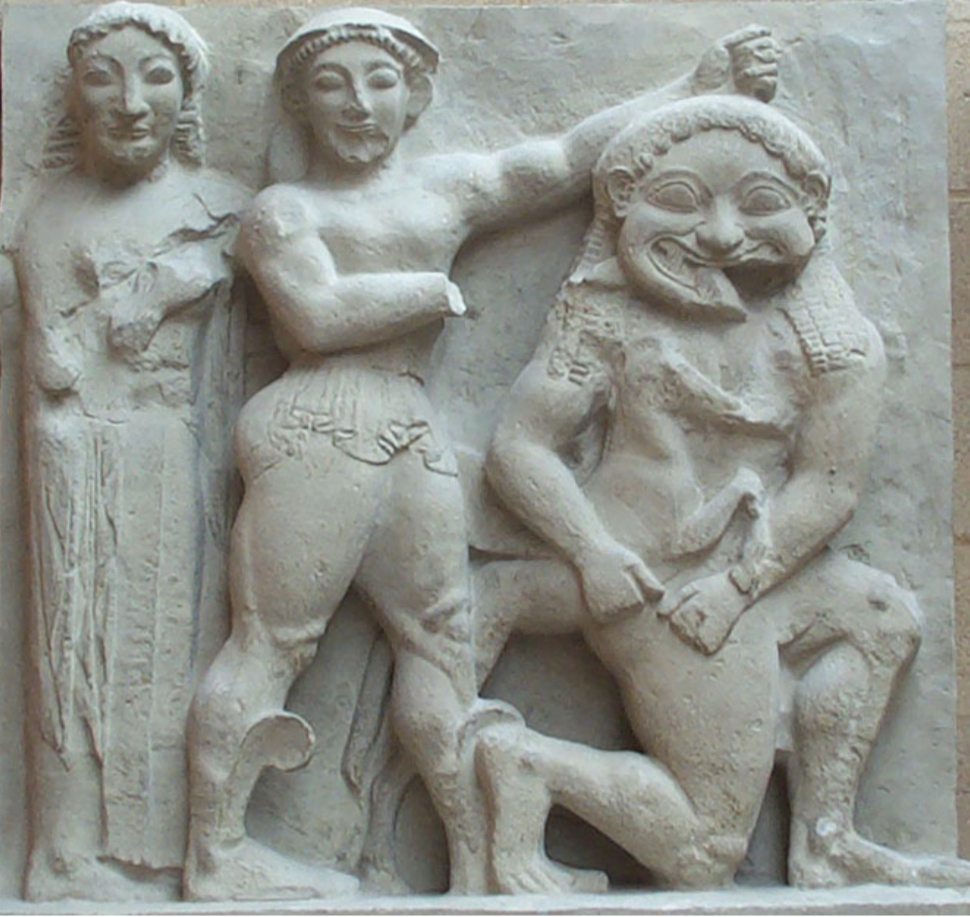
What narrative does this metope depict?
Perseus cutting off Medusa’s head with Athene standing by, while Pegasus, the winged horse, is born from Medusa’s blood.
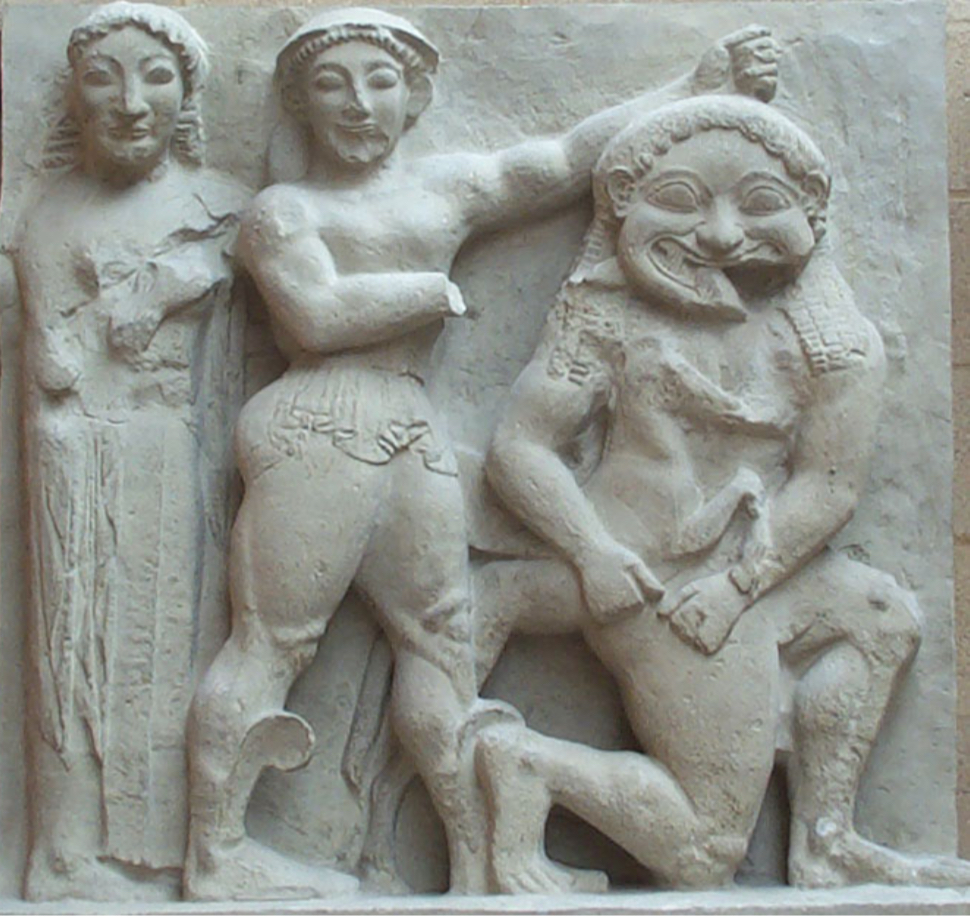
When is this metope dated to?
C575-550 BC
How tall is this metope?
1.47m high
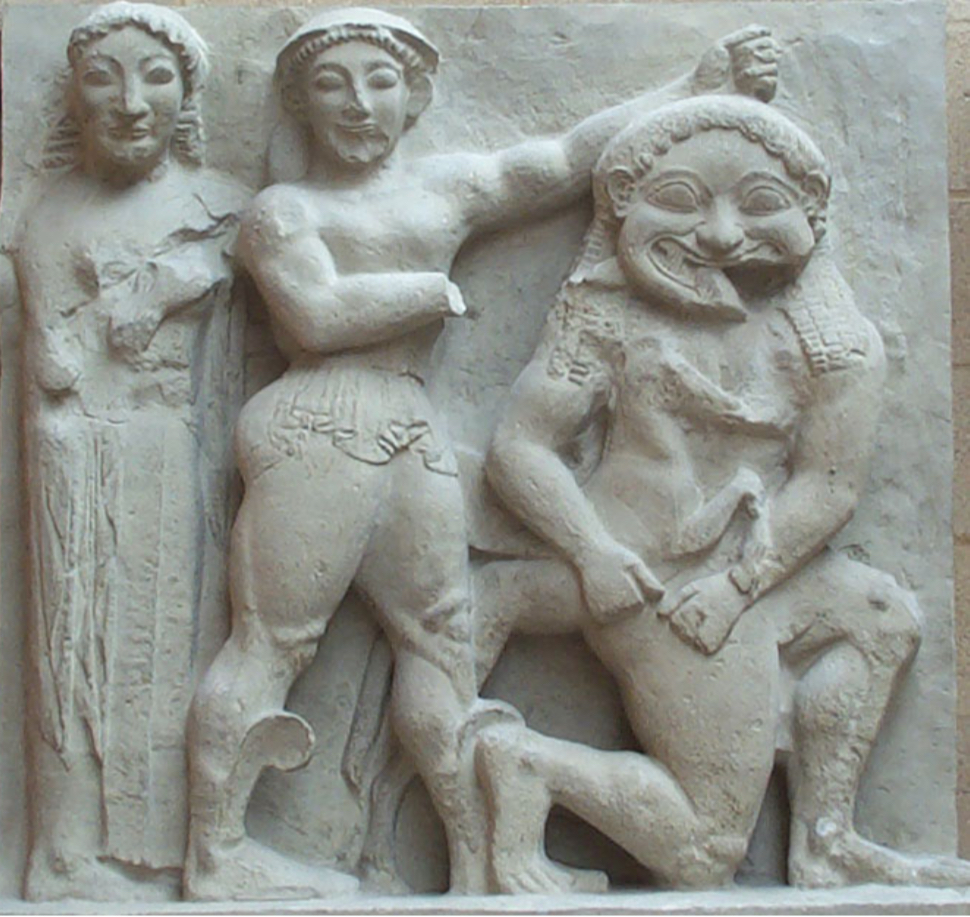
What material is this metope made from?
Limestone
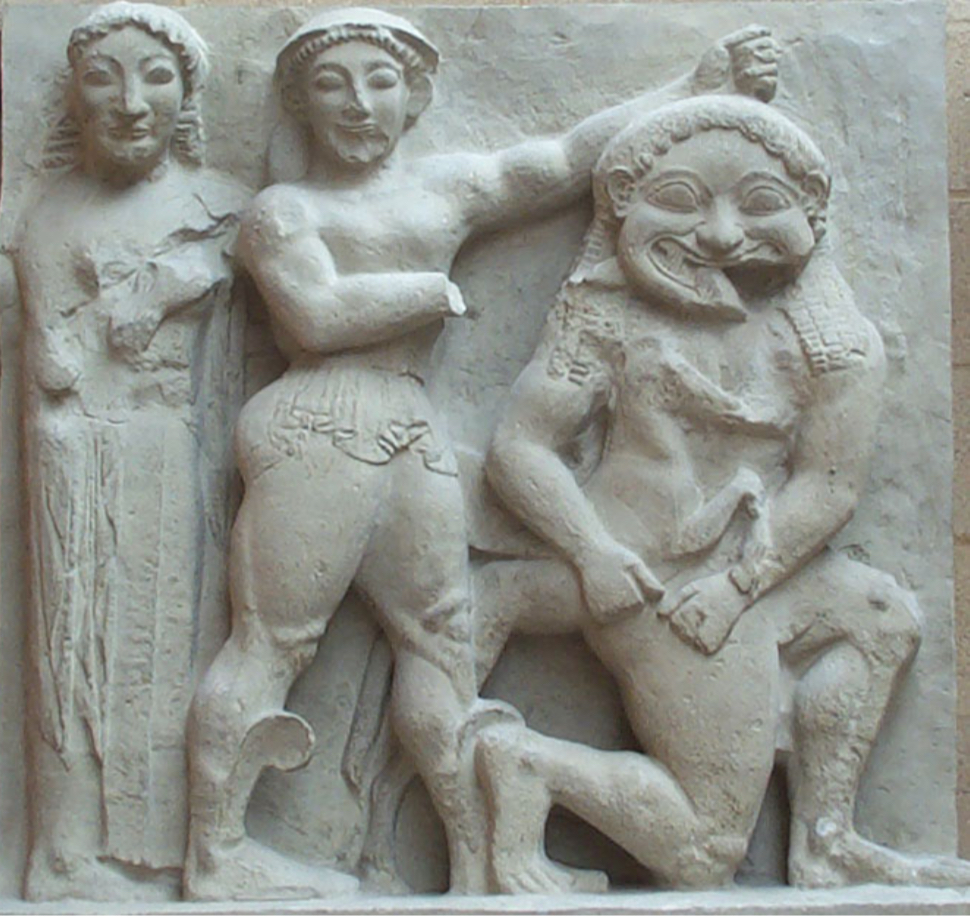
Is the composition aesthetically pleasing or not? Give 1 positive and 1 negative
POSITIVE:
Sense of symmetry and unity with the 3 frontal facing vertical figures with profile legs
NEGATIVE:
Pegasus fills awkward space but now makes the scene appear overcrowded
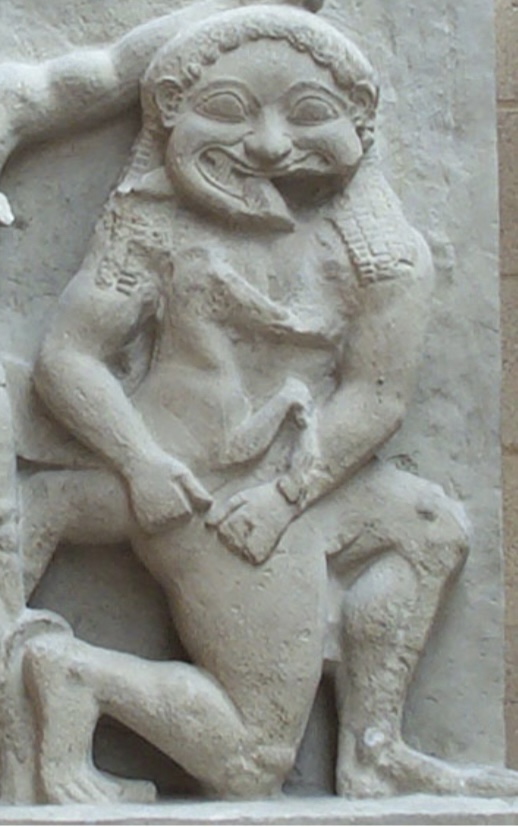
How is detail created in the figure of medusa? (2 Points)
Kneeling pose e.g. bent knees, curled toes → Reflects power balance between the figures and superiority of the heroes and gods. Medusa is physically below them.
Frontal face with stylistic archaic features to emphasise her frightening nature e.g. insectoid eyes, archaic smile, phallic nose
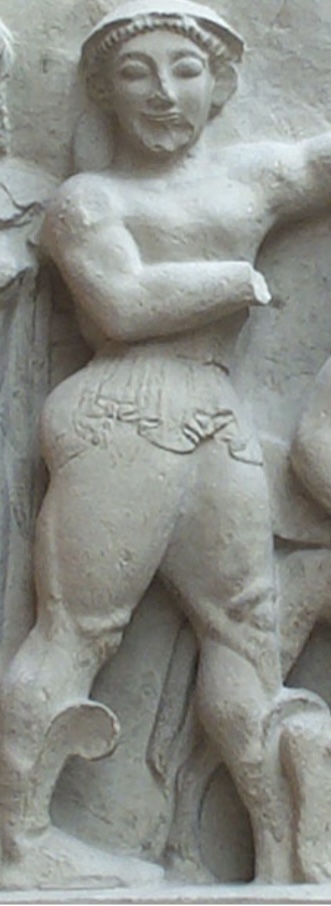
How is detail created in the figure of Perseus? Good and Bad (3 Points)
Defined and exaggerated muscles highlights his arete and characterises him as a hero e.g. large thighs highlighted by his his profile legs, large biceps stretched out in display by his action arms
Detailed hem line on the drapery of his skirt BUT it is very short
Impossible twist at the waist→ Movement is VERY rigid and static, not very realistic

How does the figure of Athene undermine the metope?
Athene’s rigid drapery and unrealistic facial features make her appear jarring and unrealistic compared to Perseus and Medusa
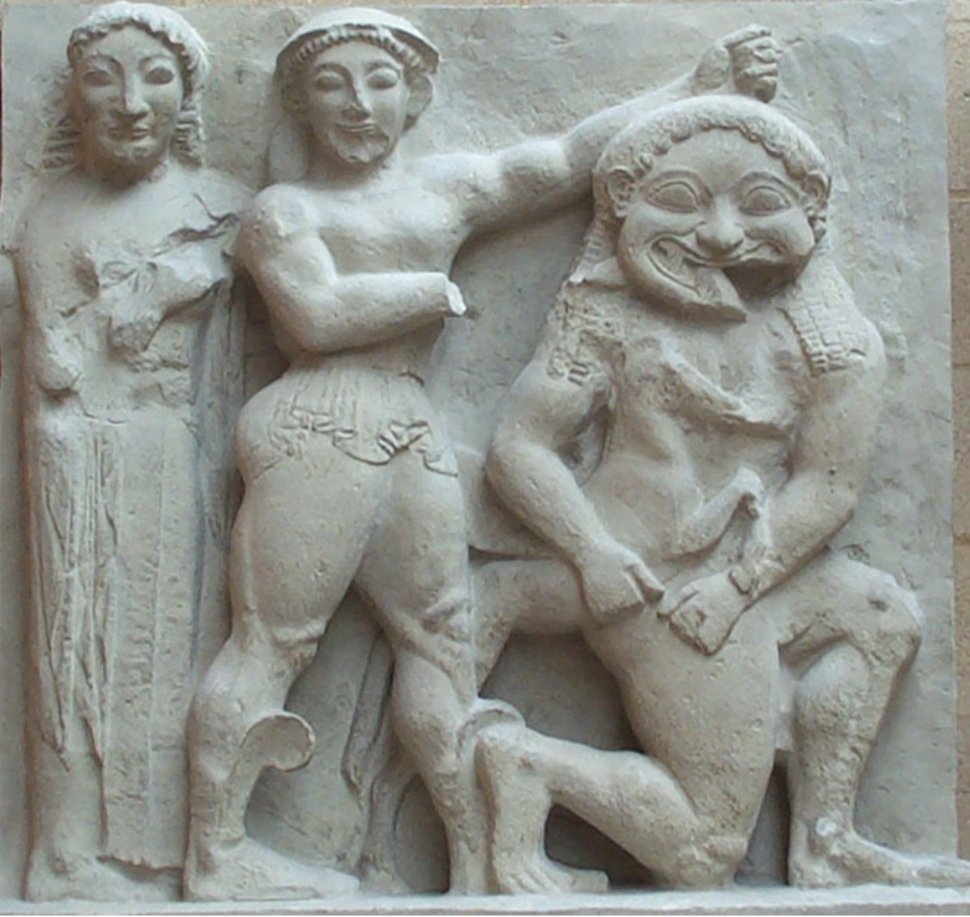
Does this metope have good unity of theme?
Yes because it shows the power of gods and heroes over monsters. Therefore representing the values of the society and showing the triumph of civilisation over barbarism.
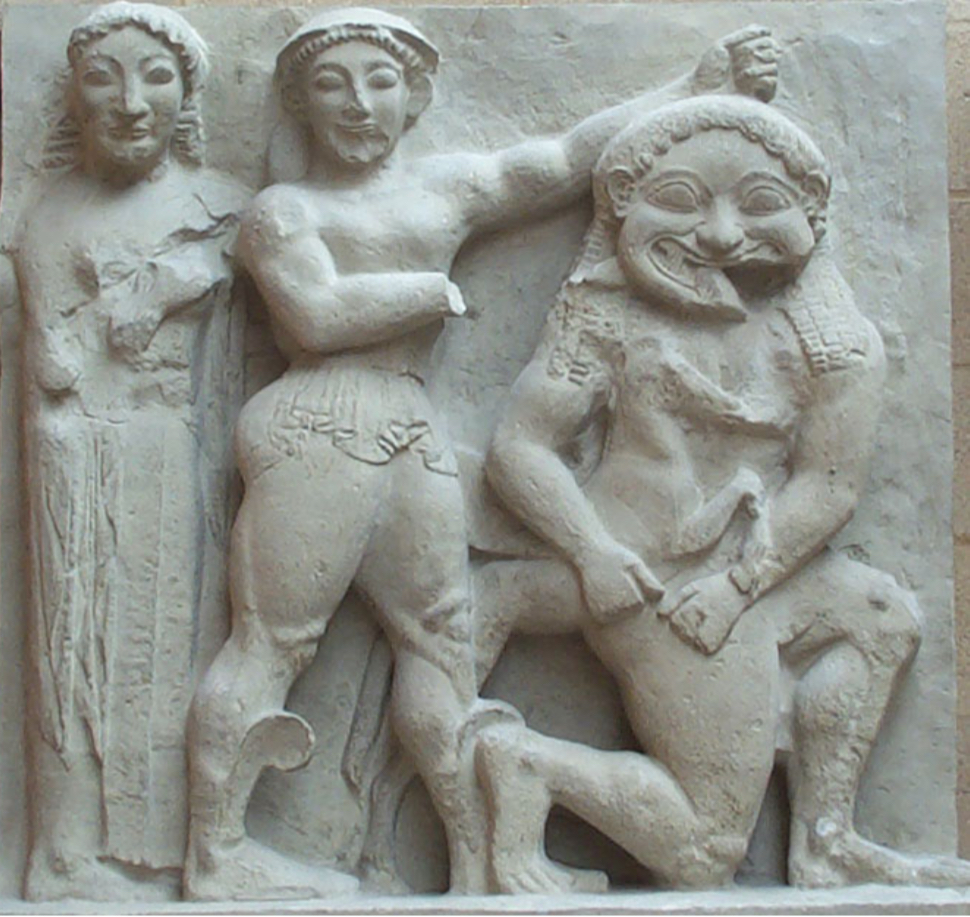
Is this metope prescribed or not?
UNPRESCRIBED

Scholarly Quote
What does Osbourne say about the Metope of Perseus and Medusa?
‘The frontality of all the figures makes the decapitation a state of affairs’ conveying the idea that ‘the worshipper’s proper activity is to reflect the power of gods and heroes back against monsters’
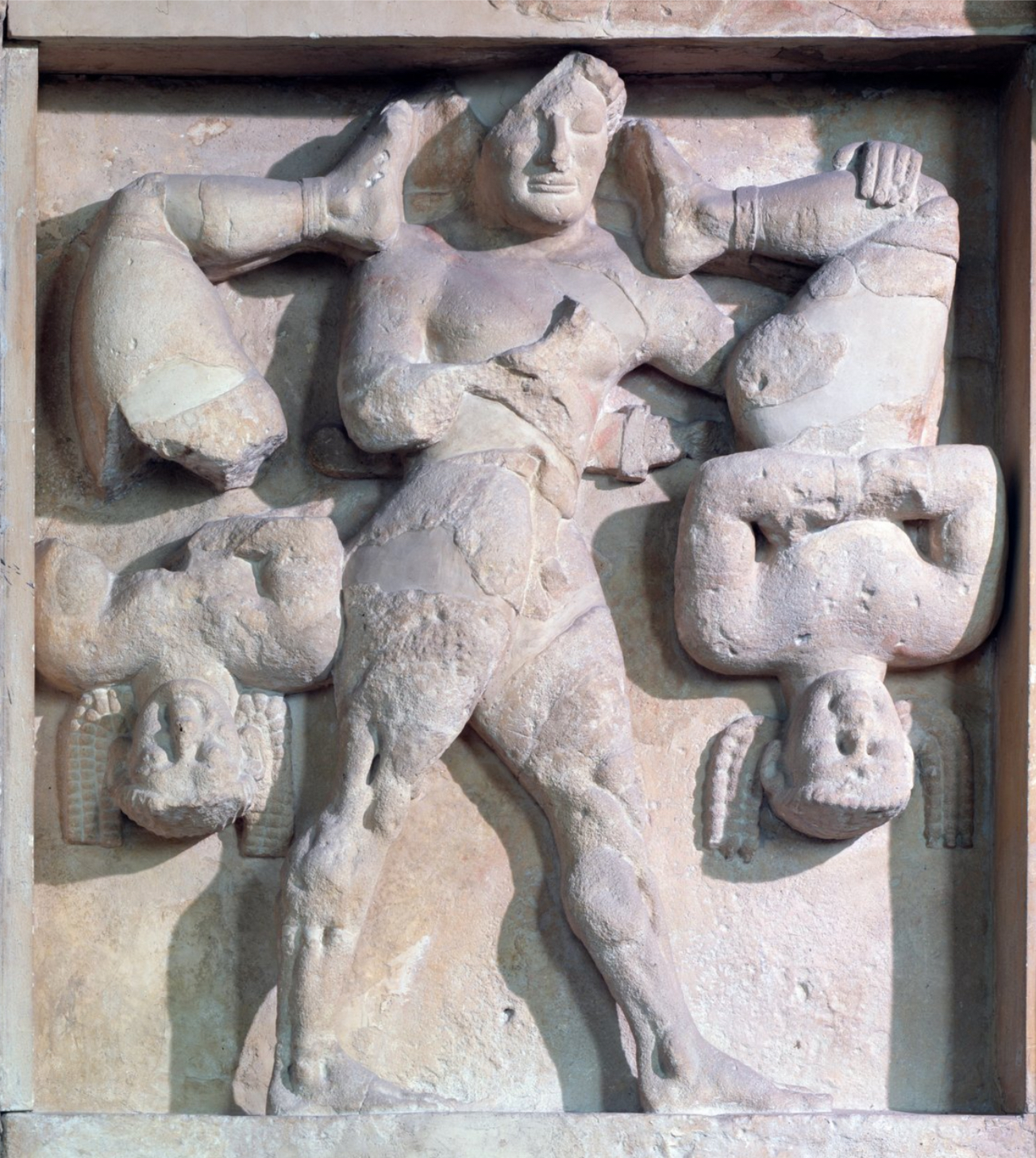
What is the narrative displayed on this metope?
Once when Herakles was asleep the two Kerkopes stole his weapons. Herakles caught them and tied them upside down to a pole and carried them over his shoulders. The Kerkopes made jokes about Herakles bottom and he was so amused he let them go.
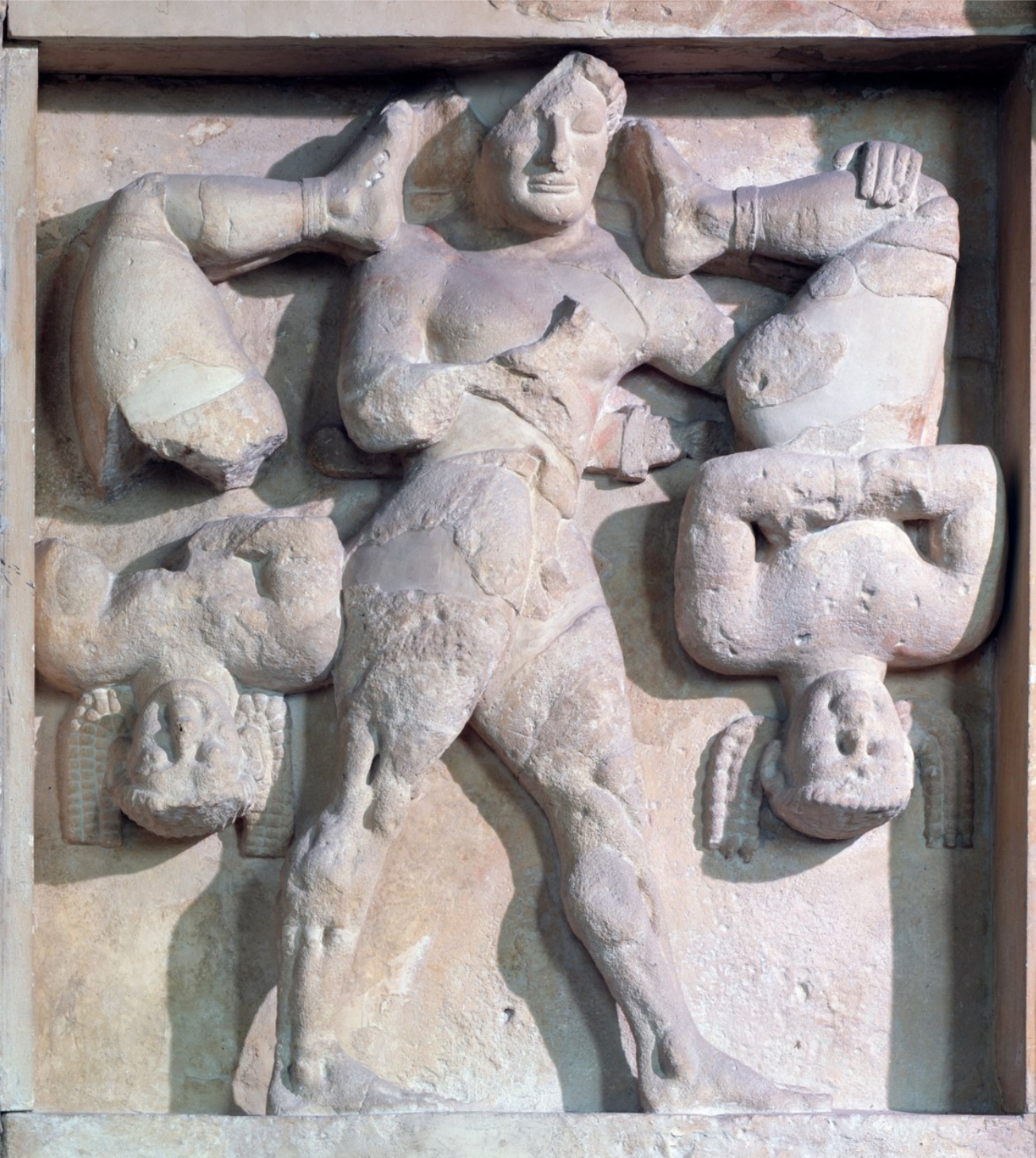
When is this metope dated to?
575-550 BC
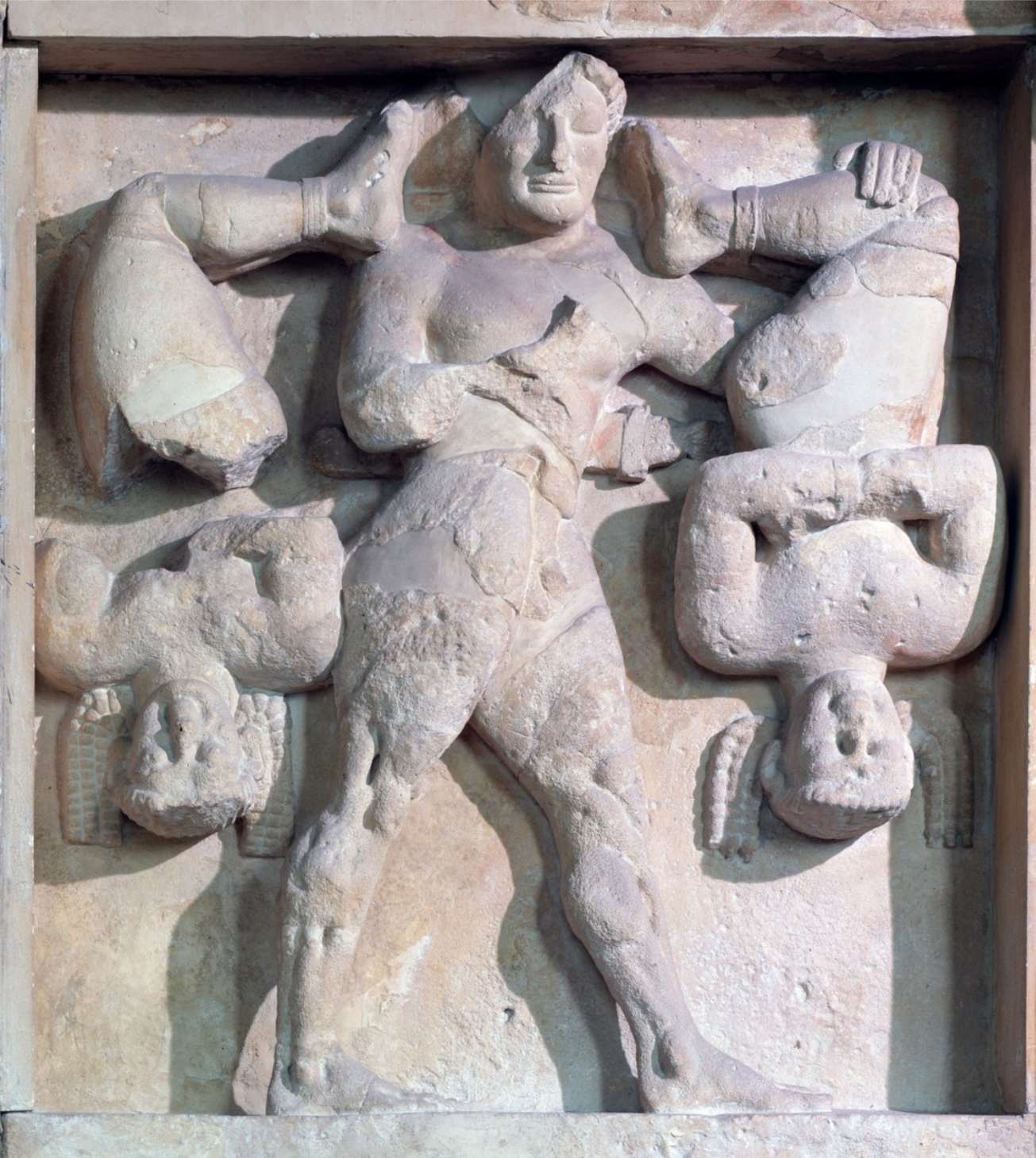
What material is this metope made from?
Limestone
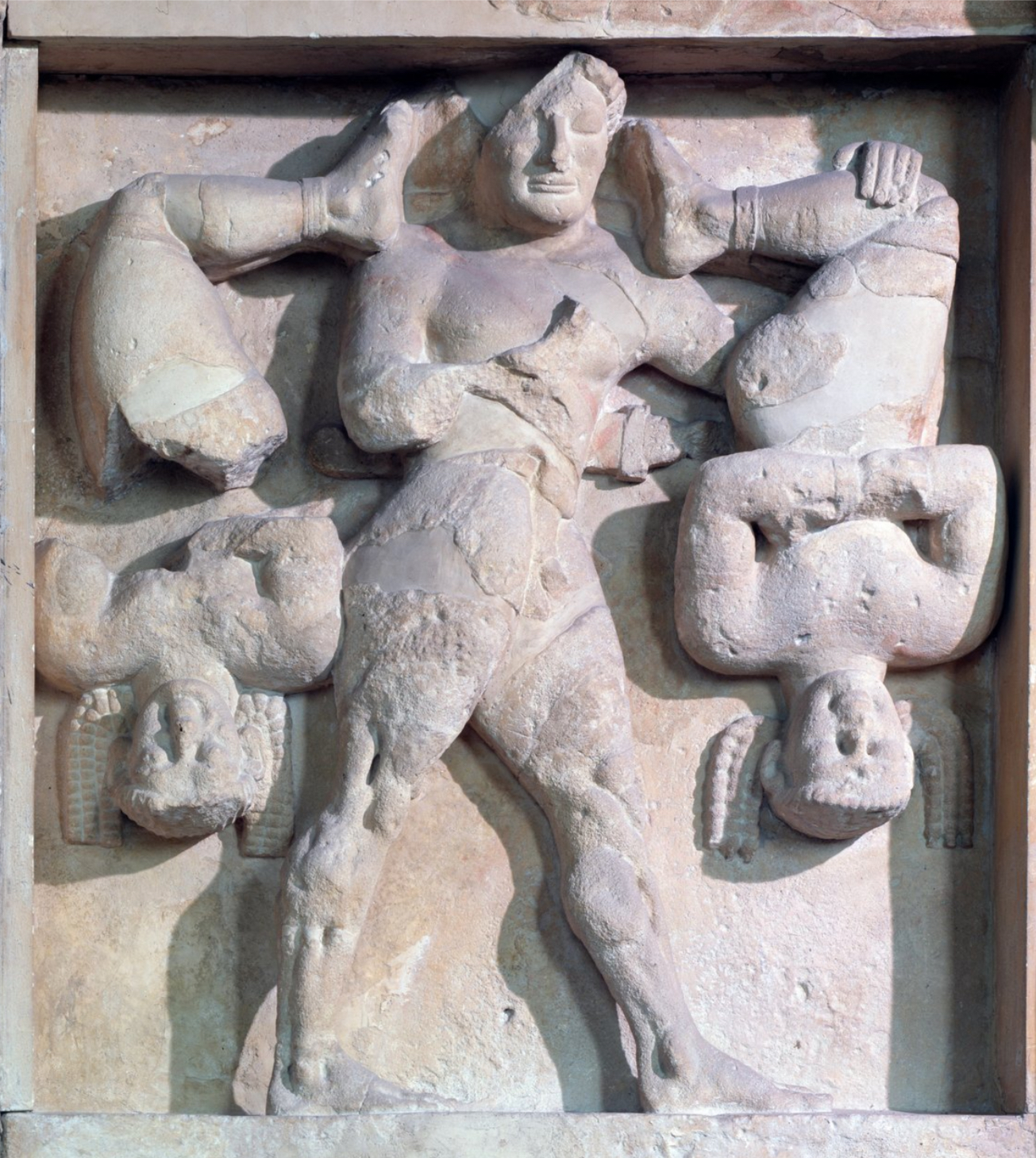
How tall is this metope?
1.47m high
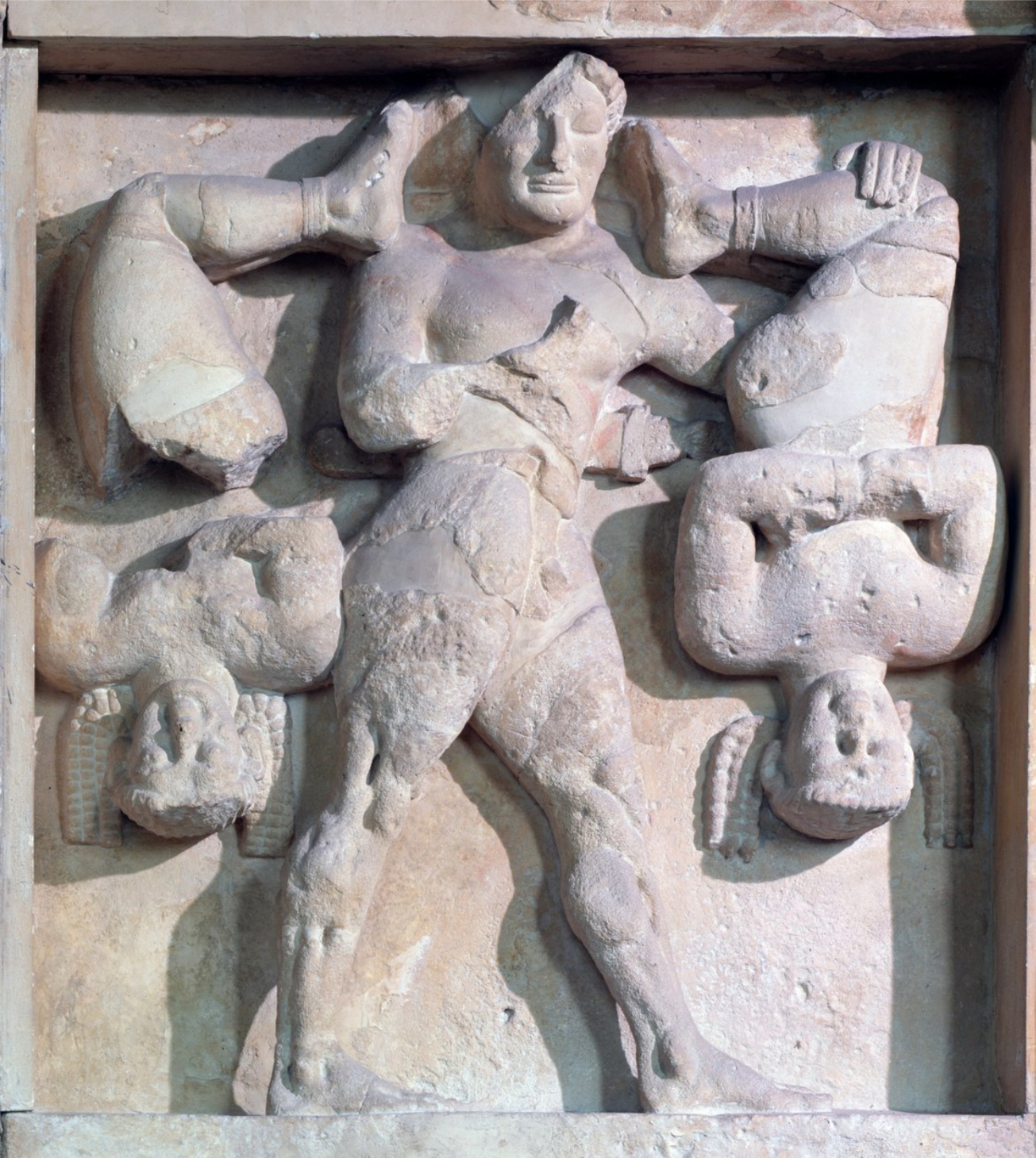
Is the composition of the metope aesthetically pleasing or not? Give 2 positives and 1 negative
Positives:
Symmetry is created through the 3 frontal faces of the figures AND the two mirrored poses of the Kerkopes
Series of verticals and horizontals (the bodies of the Kerkopes and upper body of Herakles) contrasts Herakles diagonal legs
Negative:
Awkward gap at the bottom of the metope frame
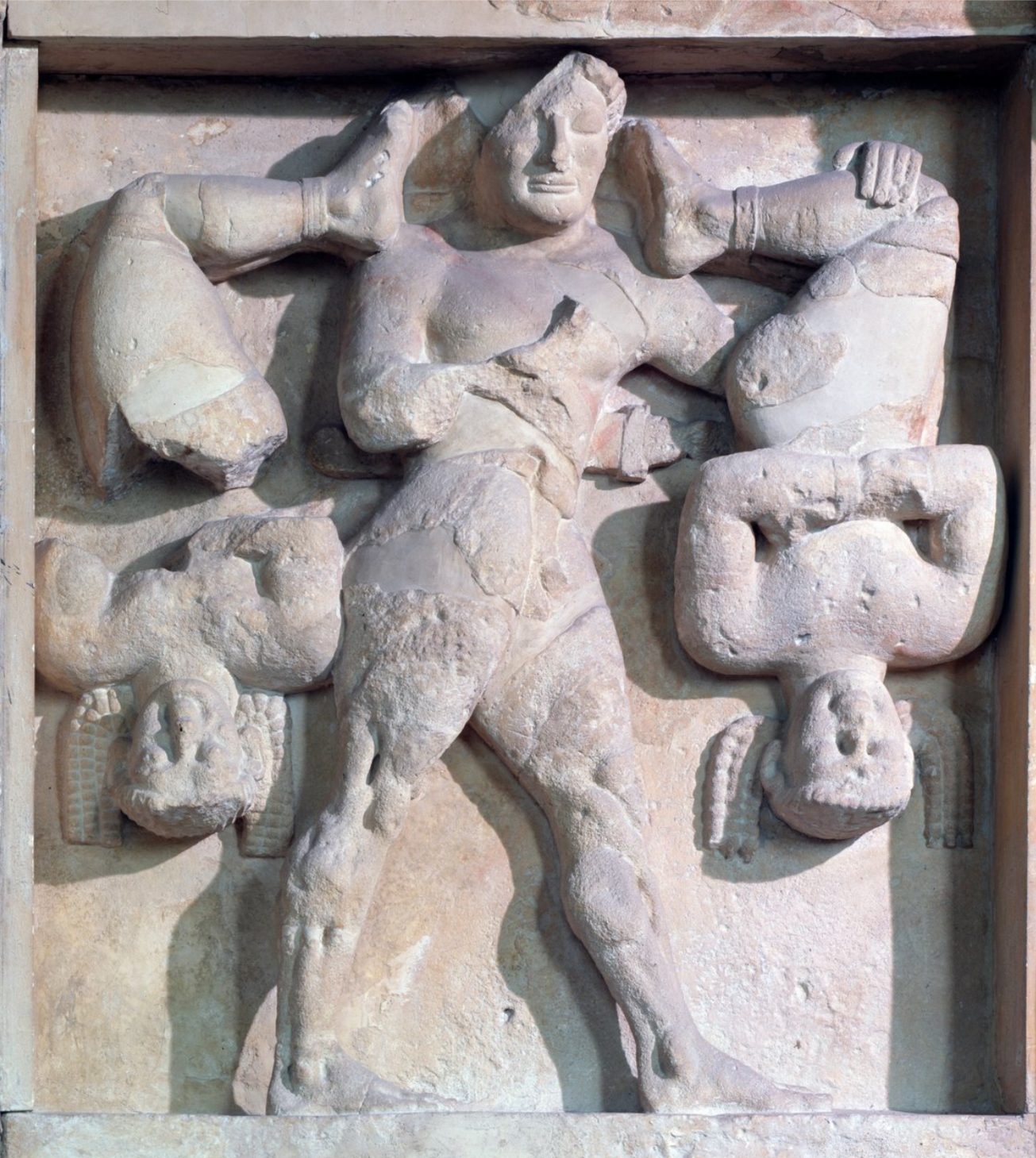
What is aesthetically pleasing about this metope? (2 Points)
The playful nature of the Kerkopes e.g the beaded pigtails reacting the gravity, mirrored poses and the mischievous archaic smiles
Symmetrical nature of the composition
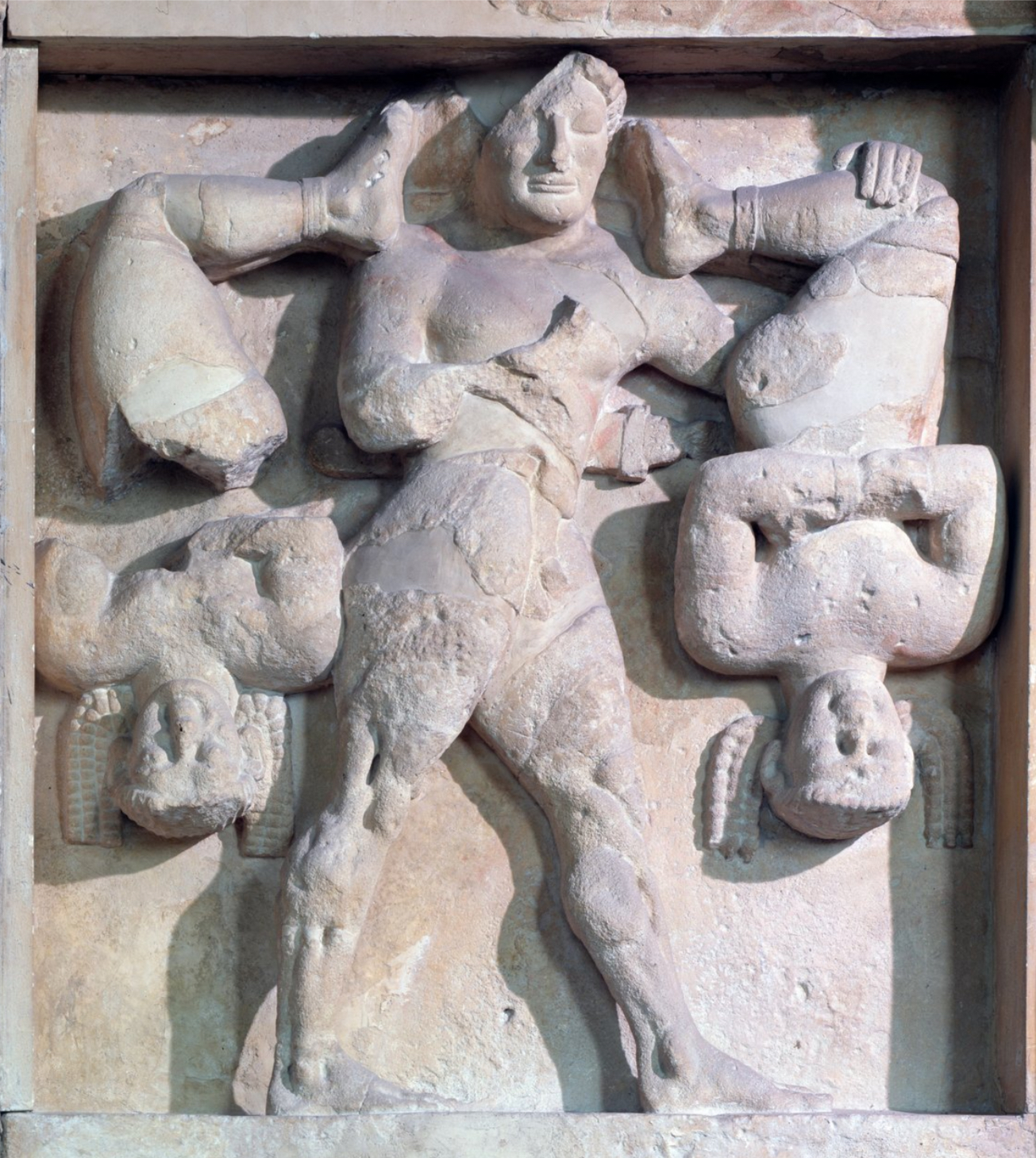
What is not aesthetically pleasing about this metope?
Poor attempt to cover up the impossible twists at the waist with the figures arms→ Makes it appear rigid and unrealistic
